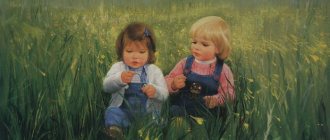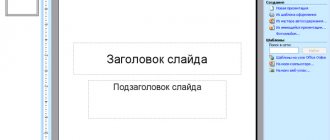Board games
A two-year-old can already see identical objects perfectly, so playing children's lotto and dominoes is great entertainment and development at the same time.
As you approach three years of age, you can try playing simple “walkers”, memories, dominoes, and cardboard puzzles. Compact board games are especially relevant when traveling with a child.
Select, download and print family board games here.
Wooden Toys
Wood is the best material for children's toys. It is pleasant to the touch and “warm”. Wooden toys have a beneficial effect on fine motor skills and mental development.
Toys and games Lucy&Leo (Spain) are number one in Europe in terms of sales among all brands of wooden educational toys. It's like Lego among construction sets and Hasbro among board games. Lucy&Leo's own production is located in China, but European specialists closely monitor the quality of products. Sorters, musical instruments, gurneys, cars and logic games are made from beech and rubber wood. And they are painted with exclusively water-based paints - no “chemistry”. The toys out of the box smell of nothing but wood.
Each new toy is developed together with child psychologists and development specialists. That is why Lucy&Leo captivates the child for a long time and makes him return to the game again and again - these toys are very “sticky”. And parents will be happy to join in the game (even dads look up from their smartphones!).
The educational functions of Lucy&Leo toys meet the principles of the Montessori method: they train motor skills, tactile perception, communication skills and prepare for real “adult” activities. And in general, Lucy&Leo wooden toys are real “anti-gadgets” that will become a useful alternative to smartphones and tablets. And they are simply beautiful and durable. And they will entertain and develop more than one generation of children in the family.
Toys for children 3 years old
Toys for 3-year-old children are the same as for 2-year-olds, but the game itself gradually becomes more complex, social and role-playing games appear, walks become more active, and sometimes even more extreme.
For example, a classic toy for 2 years is a large dump truck on a rope for the sandbox. A three-year-old will be more interested in smaller cars, but their number can be increased so that the toys can compete, “communicate” and be involved in a common game.
The optimal rolling toy for 2 years is with a stick, and for 3 years - on a string. A mosaic for a three-year-old may be smaller than a similar toy for a 2-year-old. And so on)
Mosaic
Magnetic or traditional mosaics, soft EVA mosaics - there are many options . You don't have to have everything. I would highlight:
- magnetic mosaic for the refrigerator (with a flexible magnetic element that does not scratch the surface) - an alternative to having fun playing with pots while mom is busy with chores in the kitchen;
- a large mosaic on a transparent or wooden field for creating paintings based on samples , as here;
- classic mosaic “on legs” - as soon as the baby stops putting everything in his mouth.
Mosaic with a screwdriver on Aliexpress
Toys for children 2-3 years old for the sandbox
There are children who literally cannot be pulled out of the sand, and there are children who are indifferent to digging in the sand. In any case, toys for children 2-3 years old are needed for the sandbox, the cost of the issue is low:
- try it and suddenly you’ll like it;
- making Easter cakes for mom is a good educational activity;
- for exchange for other toys on the playground.
In addition, a bucket is a universal game item for storing anything.
Playing with sand is very useful in developing coordination and fine motor skills, for introducing new concepts: dry/wet, big/small, flat/volume, learning different shapes and structures.
By constructing various towers and sand cakes, the child develops imagination and intelligence, acquires skills and experience in communicating with children, plot and role-playing games, and manipulating one toy for a variety of actions. The concepts of “one’s own” and “someone else’s” are mastered
By staging various stories in the sandbox, an older child conditionally solves his problems, frees himself from worries and fears, which is the basis for the popular “ sand therapy ”. That is, toys for the sandbox are needed not only for 2-3 years, but also for the entire preschool period of development and cognition .
Presentation “The emergence and development of children's toys”
Tatiana Panfilova
Presentation “The emergence and development of children's toys”
The emergence and development of children's toys
Scientists associate the emergence of toys the development of labor activity of primitive man. Since those ancient times, toys in the form of tools, weapons, and household items, with the help of which children mastered many vital actions and methods of activity.
Archaeological research and literary sources have brought information about toys of the ancient world .
In Ancient Egypt, toys were made from wood and fabric. Figures of domestic animals, dolls, and balls have been preserved. Ancient craftsmen tried to “revive”
a toy , to convey in it the characteristic movements inherent in a real object, for example, a toy with an opening mouth.
Some toys give insight into the social structure of Ancient Egypt: corporal punishment of a slave or a working slave.
At the same time, such a type of toy as a doll arose. The oldest Egyptian dolls are about 4 thousand years old. They were cut out of thin planks and painted with a geometric pattern symbolizing clothing. The dolls' heads were decorated with wigs made of wooden and thread beads. The most ancient Egyptian dolls were funeral gifts and were designed to brighten up the loneliness of the deceased.
In ancient times in Greece and Rome, toys were considered an important means of education. Artistic toys made of ivory , amber, terracotta (dolls, animal figurines)
Just like today, a child's first toy in ancient times was a rattle.
The word “rattle” means a hollow object with small objects such as beads, pebbles, plant seeds placed inside, which makes sounds when shaken.
The oldest rattles date back to the 8th millennium BC. e.
Since the rattle was a widespread household item and easy to make, a lot of them are found in archaeological excavations. Most of them are made of clay (since this material preserves well)
.
The slide shows an ancient Egyptian rattle in the shape of a fish from the middle of the 2nd millennium BC. e. it is kept in the Brooklyn Museum. Its length is only 11 cm. Fish in Egypt is a symbol of birth and rebirth - one of the most common children's amulets .
A small pig found in Cyprus, from the British Museum's collection of antique ceramics. Pig shaped rattles are very symbolic as these animals are associated with Demeter. Demeter "Mother Earth"
in ancient Greek mythology, the goddess of fertility, the pig meant rebirth and rejuvenation.
Three rattles from Latin America:
- rattle of the pre-Columbian period, 1st-2nd century. BC e. from kaolin wedge (Mexico, Jalisco)
;
- rattle of the Hiwi Indians (Guahibo)
late 19th century pumpkin, wood and feathers from Venezuela;
- the third - made of metal with a stone head from Peru, 3rd century BC. e.
Initially, the rattle belonged to the world of adults. It was one of the first attributes of ancient religions and at the same time the first musical instrument. It can be found in shamanic rituals. Rattles were supposed to ward off evil spirits, cleanse space and bring harmony to the world.
On the slide we see a tool - the sistrum. Translated it means “to shake”, “to shake”. Metal plates were placed on the horizontal crossbars, which, when shaken, produced a very pleasant melodic ringing sound. The illustration shows a modern reconstruction of an Egyptian sistrum, a Hittite sistrum from the first half of the 3rd millennium BC. BC, made of copper (Metropolitan Museum)
and a fragment of a painting from the Temple of Abu Simbel in Egypt, which depicts Nefertari playing the sistrum.
Old Russian rattles were made of wood and clay; plant seeds, beads or pebbles were placed inside birch bark. A round rattle on a stick was common; spiral patterns and other symbols were applied to it. Almost all peoples associated the ball and round shape with the sun, which gives life, warmth and harvest. In Pomorie they made sharkunk rattles - many cubes were woven from birch bark or sticks, which were connected into a large cube on a stick, and a dried pea was placed in each small one.
Toys be judged from museum collections available in many countries around the world. Toys intended for representatives of the nobility and their children have been preserved Since those times, doll houses have been preserved with full furnishings made of expensive materials, often with decorations made of precious metals and stones. Doll houses were intended to decorate the interior and entertain guests. The master usually made such toys Many of them are real works of art. They were kept as family heirlooms and passed on by inheritance.
On the slide is one of the oldest and most valuable dolls' houses in Great Britain, made in the 1740s. It was preserved in its original form, since it never needed restoration - children were not allowed to play with such a valuable thing.
In Russia, toys had a serious meaning. With toys , skill was passed on by inheritance; they prepared for life, developed physically and spiritually . Samples of ancient Russian toys (clay whistles, ducks, birds, dolls)
found during archaeological research in excavations in Radonezh, Moscow, Kolomna.
The heyday of toy crafts in Russia dates back to the 16th-17th centuries. During this period, folk wooden and pottery toys developed . , Dymkovskaya Sloboda, Kargopol, and Tula centers of pottery toys A large trade in wooden carved toys developed in the village of Bogorodskoye. The first mention of it dates back to 1663. Figures of bears, birds, etc. were cut out for children.
The most common toy for girls was a rag doll.
The common name for this doll is “twist” (from the word “twist, twist”
).
The children began to “twirl”
From five years.
any piece of fabric
into a “rolling pin” The doll was not given a face - it remained “faceless”
.
The doll remained faceless for a long time because people were afraid to completely liken it to a person, because they believed that a doll with a “face”
seemed to acquire a soul and could harm the child.
“faceless”
doll was considered an inanimate object and could not harm the child.
The development of toy production has always and at all times reflected the changes taking place in human society. So, at the end of the 19th - beginning of the 20th centuries. Industry , vehicles, and technology in general began to develop in society new types of toys appeared . depicting vehicles appeared Along with mechanical devices, , magnetic, and electrified toys appear . At the very beginning of the 20th century. the first constructors (construction toys ) appear
.
Since 1961, the Danish company LEGO began producing a new generation of construction sets. The basis of this construction set was made up of multi-colored cubes of different sizes and shapes with protruding cylindrical buttons. From its first appearance , these construction sets attracted people's attention, and they began to be widely used for children's development .
Modern LEGO construction sets are complemented by figures of people and animals, and also display different themes that are suitable for children of different genders and ages. With the development of the electronics industry, new horizons have opened up for creating complex children's toys . Electronic toys with remote control and programmable effects appeared. appear and become very popular.
Thus, we can say that the history of children's toys began in ancient times and is inextricably linked with the cultural development of mankind .
When talking about a toy , it is important to remember its educational and educational significance for the development of a child . properly selected toy allows you to develop your baby both mentally and physically.
Ushinsky wrote: “A child sincerely becomes attached to his toys - he loves them tenderly and passionately, and loves in them not their beauty, but those pictures of the imagination that he himself is attached to them. A new doll, no matter how good it is, will never immediately become a girl’s favorite, and she will continue to love the old one, although she has lost her nose for a long time and has wiped off her face.”
Stickers
Stickers are loved by 99.9% of children. It is better, of course, to choose reusable ones with a large A3 field. For example, a Panorama with reusable stickers and an educational Poster-game with reusable stickers.
More durable analogues are Magnetic Theater, Nano-stickers, “eternal” vinyl stickers, for example from Melissa & Doug Set of stickers with the “Jungle and Savannah” background. Bright and large themed stickers can be offered to babies from about 10 months of age. Good series of reusable stickers:
My first reusable stickers
My first educational stickers





